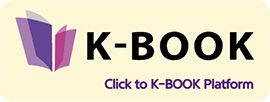Export Prospects of Korean Books
KPIPA’s Choice for Supporting Abstract · Sample Translation
2017.7.28
Pa-Yo-Ming's Recycled Crafts Book
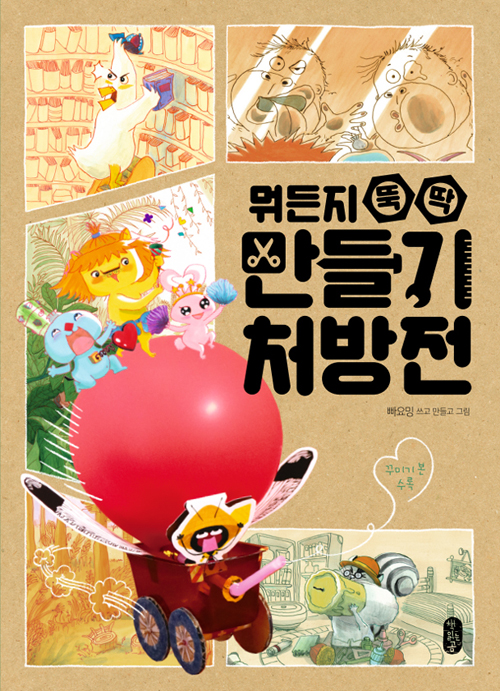
1.Publication Details
Imprint | Bearbook
Title | Pa-Yo-Ming's Recycled Crafts Book
Author | Payoming (AHN, Seung-Ha; KIM, Tae-Sim; YOO, Joo-Yeon)
Format | 215*297
Binding | Softcover
Pages | 184pages (Includes a guidebook for decorating)
ISBN | 979-11-5836-034-4
2. Contact
Name | Choi, Hyun K.
Phone | 82-2-332-2672
Email | bear@bearbooks.co.kr
URL | http://cafe.naver.com/bearbook
3. Selling Points
Recommendations & Selections | Ranked as top 50 on the children’s book list for 5 consecutive weeks after its publication
4. About the Author / Illustrator
Seung-Ha Ahn, who created Baba, studied western painting. After working as an assistant director in animated films, she now is mesmerized in making picture books with her friends from different backgrounds. Tae-Sim Kim, who created Yomi, majored in applied arts. She currently strives to communicate with children through her work. Joo-Yeon Yoo is the creator of Ming. As a western arts major, she draws bits of her everyday imagination. Her main work includes 《Art Museum in a Mess》. Like Baba, Yomi, and Ming, the three authors, who have different personalities, talents and weaknesses, complemented each other to create this book.
5. About the Book
Handcraft, Recycling, Creativity, Imagination!
Do you think handcrafting is too difficult? Don’t Worry! Talented Baba, caring Yomi, and lazy but witty Ming will solve your problems with an easy prescription to handcrafting. Try crafting recycled materials with bbayoming to help solve the concerns of the friends in the stories. Soon you’ll be a master handcrafter! The book includes a guidebook that will help you decorate your work. Also, video guides can be found on the bbayoming website (www.bbayoming.com).
The Kid who has loud Sound of Footsteps is Creative
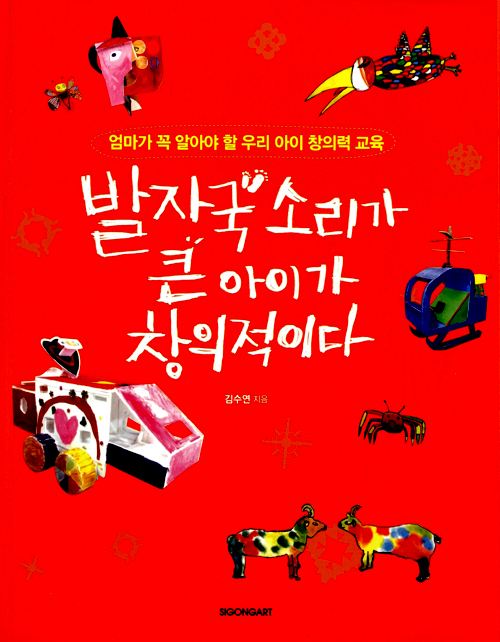
1.Publication Details
Imprint | Sigongsa Co., Ltd
Title | The Kid who has loud Sound of Footsteps is Creative
Author | Soo-yeon Kim
Format | 170*220
Binding | Hardcover
Pages | 216pages
ISBN | 978-89-5277-199-5
2. Contact
Name | Sunju Jung
Phone | +82-2-2046-2895
Email | alliswell1224@sigongsa.com
URL | http://www.sigongsa.com
3. Selling Points
Rights Sold | Taiwan
Awards | Selected for the Korea Arts & Culture Education Service’s Children’s Art Education program in 2002/ Introduced on “60 Minute Parents” on EBS
Recommendations & Selections | A revised 2nd edition of the 17-year steady seller that was first published in 1998
Media Reviews | A creativity cultivating program that goes far beyond the average art class
Target Reader | Parents and teachers
4. About the Author / Illustrator
Since graduating from Seoul National University, with a major in painting, Soo-yeon Kim has held numerous individual and group exhibits at the Seoul Arts Center (1993) and the Insa Art Center (2002). Her books include Artist of Yellow, Van Gogh (Sigong Art), Artist of Mystery, René Magritte (Sigong Art), The Dinosaur and the Ant (Sigong Jr.), and Kids with Loud Footsteps (Yolimwon), and she has also authored art textbooks for elementary, middle and high school curriculums. Kim currently operates ‘Kids with Loud Footsteps’ (www.willbeart.com).
The program for [Kids with Loud Footsteps] started out with 4 students in Mapo, in 1997, and soon became wildly popular through word of mouth. Kim’s unique art education program invites children into an open and stimulating world of creative and individual expression. Since it began, the program has been recognized as an innovative form of education, being selected for the public children’s art program of the Korea Arts & Culture Education Service (currently Arts Council Korea) in 2002. The program now operates in Mapo, Daehakro, Banpo, Bundang, Chungdam, Jamsil, Mokdong and Joonggye.
5. About the Book
Effective children’s education proven by 17 years on the steady seller list.
The revised 2nd edition of the 17-year steady seller, [The Kid with Loud Footsteps is Creative] was first published in 1998. The book introduces various educational programs and real cases to help kids express their creativity in an uninhibited way. The author’s program was so popular that it was selected as the children’s art program of the Korea Arts & Culture Education Service in 2002, and was also introduced on EBS’s “60-Minute Parents”.
This revised edition maintains all the important points of the first edition and features added content regarding traits of creative children and tips for teachers. In the appendix, the reader will see stories about extraordinarily creative children, better teachers and outrageous works of art. In a world where parents’ misguided educational passion may actually suppress their child’s creativity, this book will serve as a sensible guide for art education.
Based on her experience, Kim emphasizes that the more a child has to learn, the more passive he will be. When parents see an exceptional student, they usually like to copy and use the exact same studying methods for their own child. However, no two children are the same, and a child’s good grades do not always indicate well-rounded growth. “Life after school is too long and important for grades to be an indicator for everything.”
Creativity as emphasized in this book is not limited to the subject of art. It is creativity that empowers a child to find solutions for various problems that she will face throughout the course of her life. The author suggests an effective way for such true education through her carefully developed educational program, and cases of children who freely create art work.
The Bare Face of Father’s Childcare
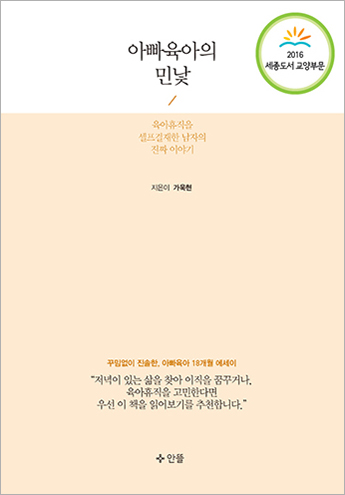
1.Publication Details
Imprint | Antteul
Title | The Bare Face of Father’s Childcare
Subtitle | The Story of a Man Who Approves His Own
Parental Leave
Author | Ka Wookhyeon
Format | 145*200
Binding | Softcover
Pages | 260pages
ISBN | 979-11-9578-910-8
2. Contact
Name | AJeong Han
Phone | +82 050-5355-0208
Email | antteul@garthlab.com
URL | http://www.antteul.com
3. Selling Points
Genre | Essay, childcare/education/home
Book Theme | The vivid story of Korean father’s childcare. “Looking into the bare face of the childcare done by males”
Awards | 2016 Sejong Book selected by the Publication Industry Promotion Agency under the Ministry of Culture, Sports and Tourism
4. About the Author
An avid Korean software programmer. He was in charge of a 6 year-old son for 18 months. While living as a software developer for 16 years at IT corporations and publishers, he had applied for a parental leave, yet his application was rejected. So he quit and started being in charge of his son’s childcare! His son turned 8 in 2016, becoming a healthy elementary school student. Currently, the author is in charge of contents offline fusion services. He is also actively participating as an opinion leader discussing the strategies, joys and difficulties of being a father in charge of childcare in TV shows from MBC, EBS, YTN, various newspapers and lectures.
5. About the Book
▲ The Trend of Father’s Childcare
The trend of father’s childcare is occurring in South Korea! The Korean government and the corporations started to recommend father’s childcare! The number of fathers who use their parental leave is mere 10% compared to that of women, but the number of men using their parental leave is increasing. In MBC, KBS and SBS, the main broadcasters in Korea started to produce dramas, variety shows and programs providing examples of ‘father’s childcare’.
▲ Until a Man Starts to be a Father Taking Part in Childcare
There was a father. He was a successful employee continuing promotion after promotion as an IT developer at a publisher. The child was born, and his wife’s parental leave ended. He could not receive help from others. So he requested parental leave to his company, and the company rejected his parental leave. So he quit, and started being in full charge of his son’s care. He included his vivid experiences in his book. The experiences and the conflicts he had until he started childcare and the records of his concerns are all candidly included in the book. The ways of the Korean corporations in 2016 and the vivid company atmosphere are all included in the book.
▲ Father’s Childcare, Father’s Methods of Childcare
The book includes his methods and experiences of childcare. The strategies and fun episodes of teaching how to read, how to foster sleeping habits, how to teach Korean letters, how to reprimand the child are all included in the book.
▲ The Bare Face of Korean Father’s Childcare Today
The difficult emotions unavoidable for men participating in childcare in the Korean society not used to father’s childcare are also included. The author candidly tells the feelings of being left out, inferiority and pain felt while rearing up his son. Through the candid voice of the author, the readers are able to learn about the current stage of the Korean culture.
● Benefits: The book allowing the readers to feel the exact temperature of father’s childcare, beyond the ‘heartwarming’ childcare essay!
● Reading Point
1. The father grows with the child! Games, book, learning, eating habits, sex education….. The special experiences and special thoughts a Korean father has while caring for his child
2. The only male wherever he goes! The father’s story that mothers will never know!
3. 18 months of a father’s childcare seen from the perspective of a mother
Where Is It? Here It Is!
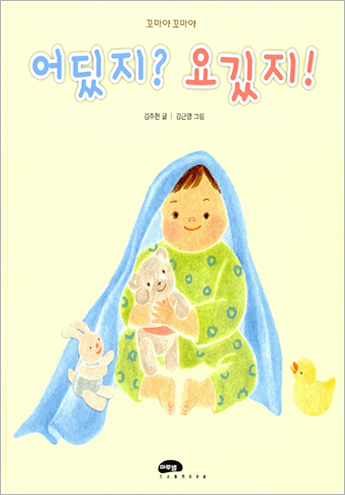
1.Publication Details
Imprint | Marubol Publications
Title | Where Is It? Here It Is
Author | Kim, Joohyun
Illustrator | Kang, Geunyoung
Format | Hardcover
Binding | 200*226
Pages | 40pages
ISBN | 978-89-5663-566-8
2. Contact
Name | Lee, Sunmi
Phone | +82-2-790-4150(503)
Email | sunmi@marubol.co.kr
URL | www.marubol.co.kr
3. Selling Points
Subject | Playing with the Body, Physical Touch between Parent and Baby, Attachment and Bond-Building
Recommendations & Selections | 2016 Selection of Sejong Book Sharing
Media Reviews | A picture book that helps babies and toddler learn about different body parts! While playing with different body parts, baby’s body and mind will grow together!
Target Reader | Babies and Toddlers
4. About the Author / Illustrator
Author | Kim, Joohyun
Kim introduces herself as an old mom who regrets not having hugged her daughter more, and not having said “I love you” to her daughter more. Kim still frequently finds herself yelling at her mischievously playful daughter. Yet, she says that she feels happiest when she hugs her daughter. Kim is the author of The Gorilla that Reads Books and Read Books or Eat, the first of which won the Borim Creative Picture Book Prize. Kim is also the illustrator of As I Want.
Illustrator | Kang, Geunyoung
Kang was born in Paju and studied design in college. Kang likes drawing the wiggly fingers and toes of babies and kids. Kang is the illustrator of Hold on Tight! and Get in, Get in.
5. About the Book
Where Is It? Here It Is! is a picture book that helps babies and toddlers explore and learn about body parts while building a healthy bond with their parents. Warm color illustrations and affectionate lines successfully express the tender love between babies and their parents. In every page, different animal mothers and babies appear to look at each other, nudge each other’s noses, and kiss, each time repeating the same question and answer: “Where is it? Here it is!” By mimicking the animal mothers and babies in the book, parents and babies can playfully explore and learn about different body parts. Building a bond between parent and baby can be more challenging than it seems. Reading Where Is It? Here It Is! together will help parents and babies buildbonds in a fun and playful way.
The Day Great Grandpa Came

1.Publication Details
Imprint | Nurimbo
Title | The Day Great Grandpa Came
Author | Yi Yeong Mi
Illustrator | Oh Seung Min
Format | 221*288
Binding | Hardcover
Pages | 38pages
ISBN | 978-89-5876-207-2
2. Contact
Name | Jeong Min Jae
Phone | +82-10-6723-5986
Email | Nurimbo_pub@naver.com
URL | www.nurimbo.co.kr
3. Selling Points
Recommendations & Selections | Selected for 2017 Happy Morning Reading
Target Reader | Children's Book (age 6~7)
4. About the Author / Illustrator
Author
Yi Yeong Mi, the author of The Day Great Grandpa Came, studied at Ewha Womans University. Drawing pictures with children at Seonhwasil, an art class, she became interested in picture books and decided to become a writer. Her works include Tak-tak the Little Migrant Bird’s Dangerous Journey Around the World, Technologies That Change the World, and Towns and Villages That Change the World.
Illustrator
Oh Seung Min, the illustrator, received a runners-up award at the 2004 NOMA Concours with his picture book, Come Out, Come Out, and was selected as the Korean Illustrator of the Year at the 2009 Bologna Children’s Book Fair. His works include Uncle Chanda, The Day Great Grandpa Came, Mom on a Tiger, Celandine Flower Comes into Bloom, No Parking, The Island of Sea Lions, Seoul, The Plastic Bag Plant, and the Selmina the Alien series (5 volumes).
5. About the Book
Grandpa Had a Dad, Too?
It’s a busy morning at Grandpa’s house. Grandma and Mom are cooking in the kitchen, and Grandpa is polishing a picture frame holding a black and white photograph. Everyone is bustling to get ready for the day Great Grandpa comes.
Who is Great Grandpa, you ask? It’s Grandpa’s dad. Min-ho is amazed that Grandpa once had a dad, too.
Dalbong, the puppy, starts barking at the persimmon tree in the yard. Min-ho chases Dalbong to the tree. Beneath it is a great big glass bead. Min-ho quickly picks up the glass bead. Then he sees a strange new boy sitting on a branch, looking down at him. Shh, the boy says, a finger to his lips.
The boy jumps down from the tree, and runs to the backyard. Min-ho follows him, and the boy demands that Min-ho give him the glass bead. He says it belongs to him. Min-ho, however, doesn’t want to give up the glass bead. He hides it behind his back, saying it’s his since he found it at his grandpa’s home. Then the strange boy takes a big step toward Min-ho.
A Special Day with Great Grandpa on His Memorial Day
In Korea, people hold memorial service for their ancestors, preparing food for the souls of those who have passed away. The ancestors are invited to partake of the food during this special ceremony, which had its beginning in rich imagination.
The Day Great Grandpa Came takes such imagination a step further and creates a real-life story. On the day of his Great Grandpa’s memorial service, Min-ho, a seven-year old boy, comes to encounter the soul of his great-grandfather in the form of Jon-oh, a boy his age. Min-ho, of course, is not aware that Jon-oh is his great-grandfather. Jon-oh is old-fashioned in his speech and behavior, having lived more than a hundred years ago, but becomes fast friends with Min-ho, a modern-day boy.
At first the two squabble over who should keep the great big glass bead that Min-ho has found, but they soon hit it off and make their way together to Jon-oh’s treasure house. Together, they play with Jon-oh’s old toys and have a swimming competition in a water hole. When it grows dark, they share some memorial service food in the backyard, away from the eyes of Min-ho’s mother. From morning to evening, Min-ho and Jon-oh are happy spending a special day together.
Ancient Roads
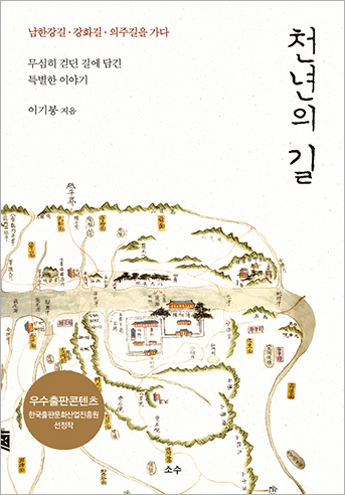
1.Publication Details
Imprint | SoSu
Title | Ancient Roads
Subtitle | River Ways, Waterways, and Travel Routes
Author | Lee, Kibong
Format | 153*225
Binding | Softcover
Pages | 256pages
Photo | 245cuts
ISBN | 979-11-8731-204-8
2. Contact
Name | Jeon, Yuseon
Phone | 82-10-9077-2081
Email | sosu_list@naver.com
3. Selling Points
Subject | Korea, geography, culture, and history
Target Reader | Adults
4. About the Author
He was born in the city of Hwaseong in 1967. He studied geography at Seoul National University and received his MS and Ph.D. from the same university. In 2002, he became a research member of Kyujanggak Institute of Korean Studies, and since 2009, he has been working as a research member at the Curatorial Affairs Office at National Library of Korea with a focus on Korean history and geography. His publications include The Birth of an Ancient City, Gyeongju, Geography Class, Joseon Cities: the Spaces of Power, Kim Jeong-ho’s Dream, Geography Geniuses during Joseon, Kim Jeong-ho: the Giant Who Ushered in Modernity, Old Maps about Land and People, and Forgotten Names of Places.
5. About the Book
The book is about roads, and it begins by asking if roads in Korea have changed since one or two thousand years ago. Namhanggang-gil, Gwanghwa-gil, Hangang, and Uiju-gil were trade routes for the common people for ages, and by taking readers on a journey along these river ways, seaways, and roads, the book introduces the changes that took place on these routes as well as the history behind them, including the changes that took place during the time of the Japanese occupation and the Hangang Development Project. Readers can also learn the original names of places and how these names became forgotten or lost.
To explain the water ways, the book takes readers on an imaginary journey, sometimes passing through water as calm as a lake but sometimes through rolling rapids. The journey has readers imagine inland ports and rapids that disappeared when Paldang Dam and Ipobo were built and also when the government implemented the Hangang Development Project during the 1980s. The journey includes a stop at Songpa-naru and Sambat-naru, where Seokchon Lake is now located. Readers learn that boats carrying grains to be paid as taxes stopped near Yongsan while other boats stopped at Samgae, which is now Mapo. With boats that carried salt, seafood, and salted seafood stopping at Samgae, it was the busiest inland port in the country.
How were sea boats different from river boats? And what was the difference between traveling on the river and on the sea? To answer these questions, the book takes readers to Ganghwa Island, where the sea meets the river. It tells stories about ferrymen who risked their lives passing through Sondolmok, about Gapguji-naru, where boats docked sideways, and about the invasion of Qing, when Ganghwa Island was captured. The journey continues to Meomeori Island, below the demilitarized zone, to Odojat, where the Hangang River meets the Imjin River, and to Yanghwa-naru, where Catholic believers were beheaded during the French campaign against Korea in 1866.In the old days, every stream, regardless of its size or length, had its own name. For example, the name Hangang was used only for Hangang-naru, while the other streams that flowed into the Hangang River had their own name: Mokgye, Makheureugi, Heunbawi, Baegae, and Chirgmi to name a few. These were the names used by people for more than a thousand years, but during the Japanese occupation, they were turned into Chinese characters, with their original names now forgotten and lost.
The book instructs readers about the way people traveled on foot long ago. They traveled with guide books called Jeongri-pyo or Dori-pyo, and the map inside the guide books illustrated seven main roads that connected different regions to Seoul along with two other branch roads. According to Jeongri-pyo, as well as Dori-pyo, the road that envoys used to travel to and from China was Uiju-gil, and therefore it was considered the most important road. But because the country is now divided, Uiju-gil now ends below Panmunjeom. As we travel south, readers stop at important historical places. The book quotes and cites from The History of Goryeo, The Annals from King Injo, and The Annals from King Seonjo to inform readers about the places of major battles, the differences between foundation stones from different dynasties, Buddha statues from the Goryeo Dynasty, government-operated inns, and Korean gardens. The book ends at Donuimun, one of the eight gates to Seoul, where Uiju-gil ends.
